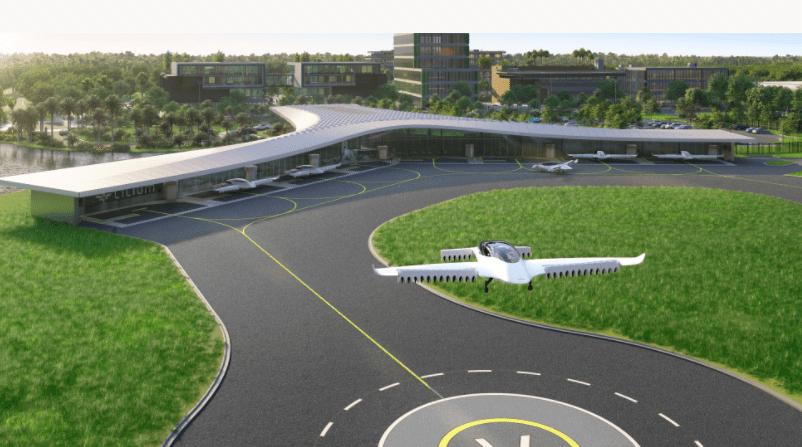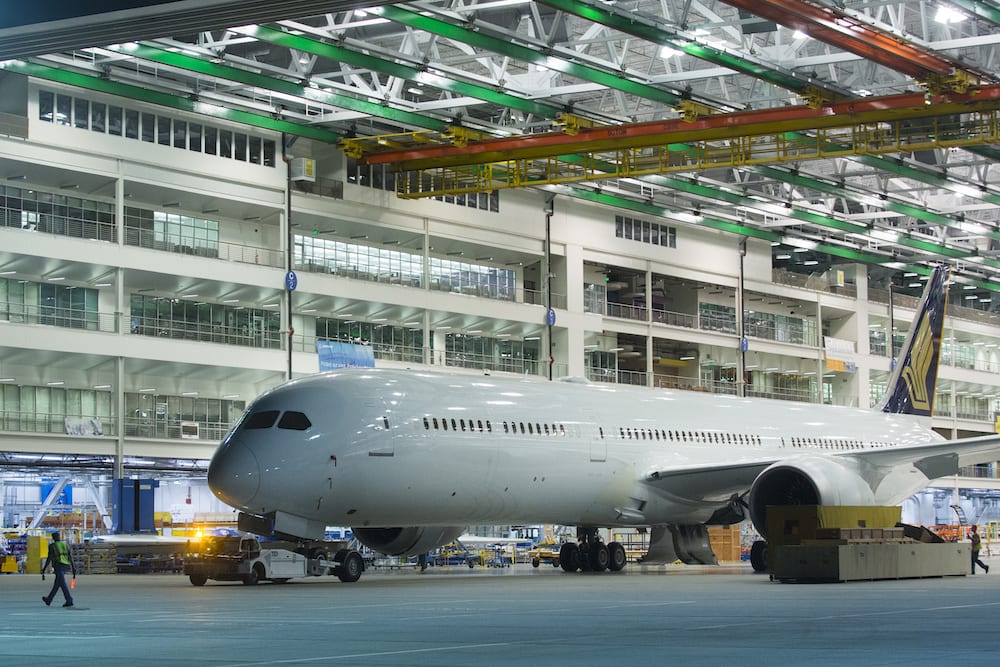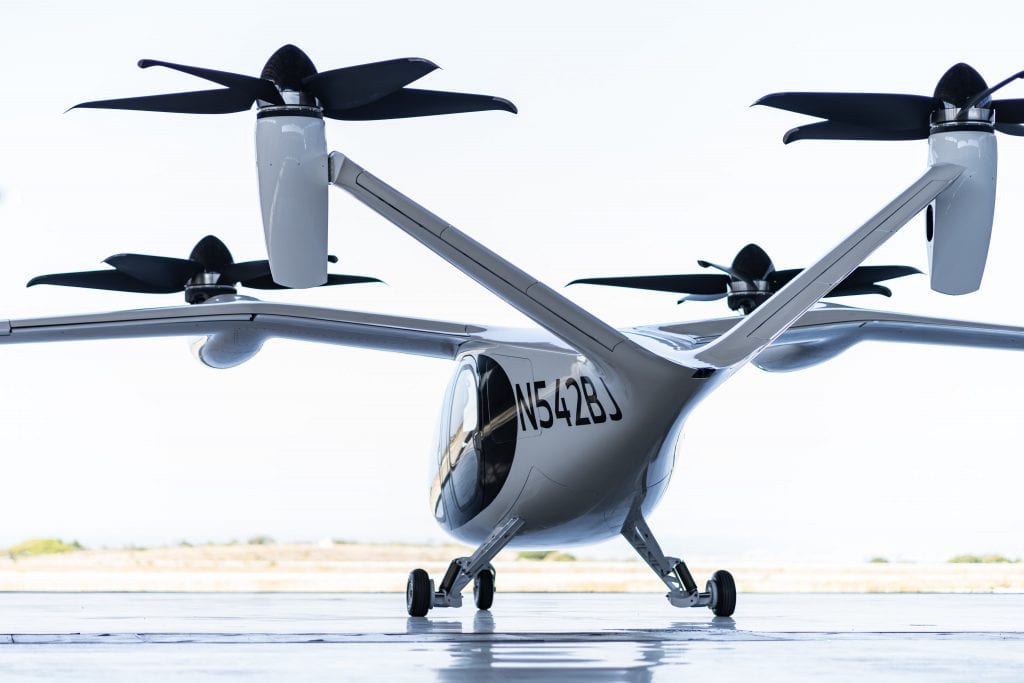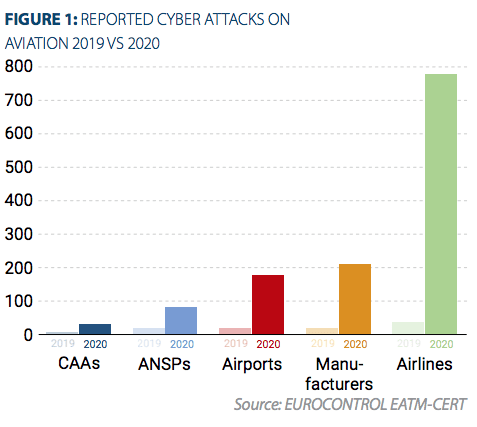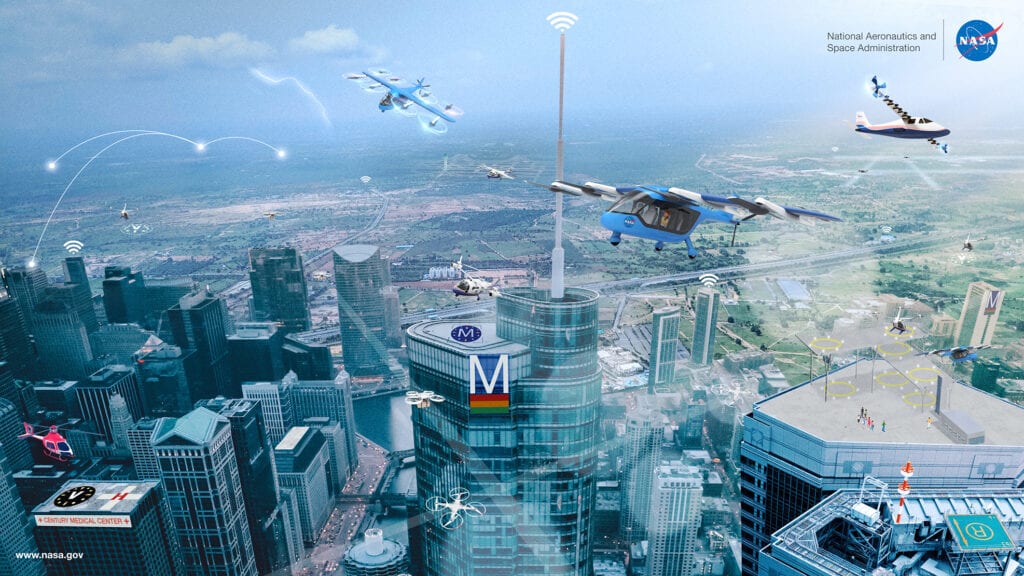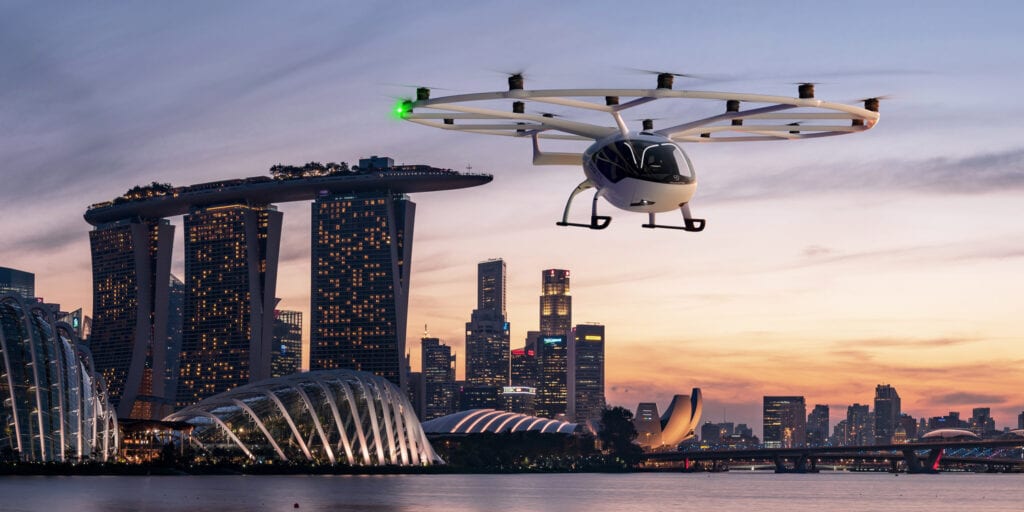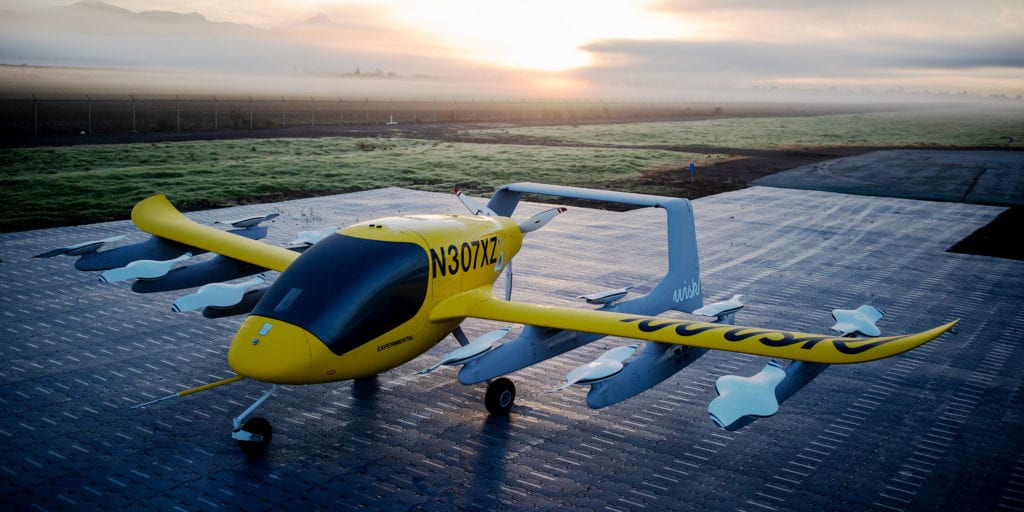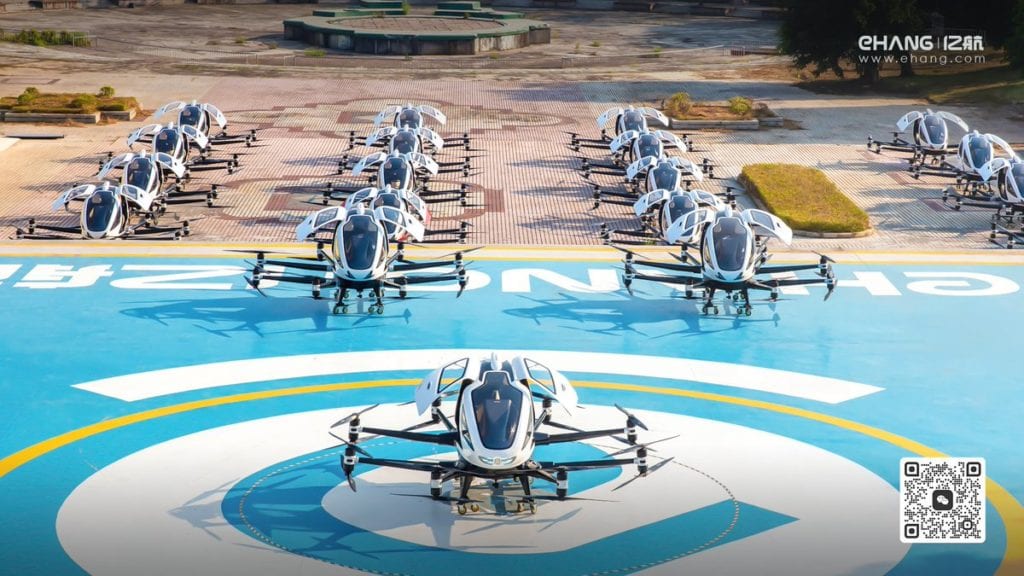
Check out the July 11 edition of What’s Trending in Aerospace, where editors and contributors for Avionics International bring you some of the latest headlines and updates happening across the global aerospace industry.
Commercial
Proposed Rule Would Require US Airlines to Refund Fees When Wi-Fi Does Not Work
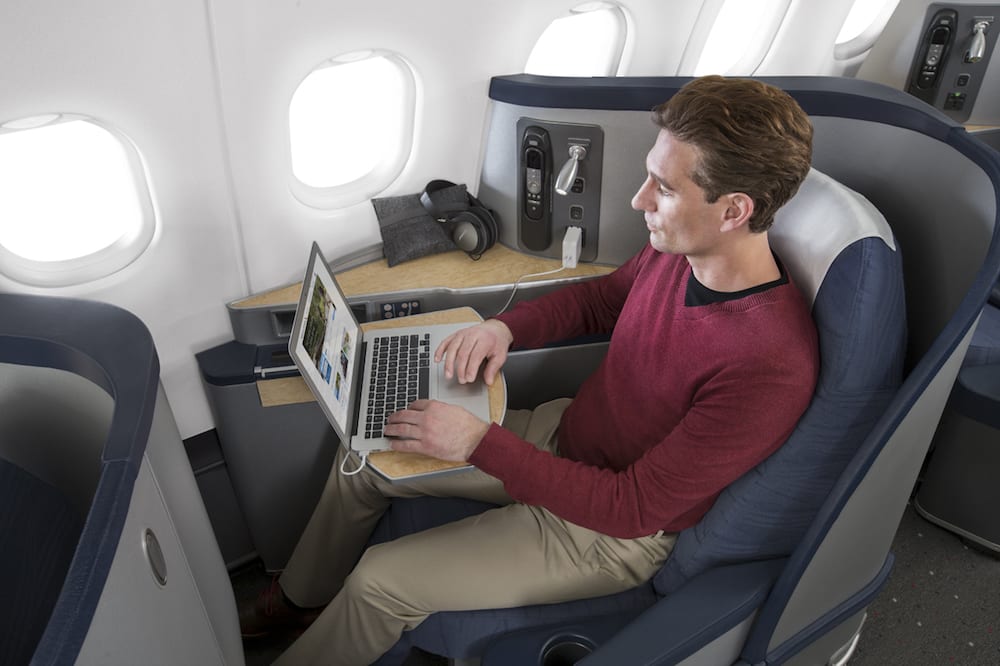
A newly proposed rule would require U.S. airlines to issue refunds for fees charged on ancillary services such as in-flight internet or baggage delivery. (American Airlines)
A new rule being proposed by the U.S. Department of Transportation would require airlines to refund fees charged for “checked bags that are significantly delayed and for ancillary services, such as advance seat selection and wi-fi, when consumers pay for them but they are not provided,” according to a July 9 press release.
“The Department is acting on President Biden’s Executive Order Promoting Competition in the American Economy,” the agency said in the release.
The new rule will expand on an existing DOT rule that entitles passengers to a fee refund if their checked bags are lost. Under the proposed rule, airlines would also be required to refund checked baggage fees when the baggage is delayed beyond 12 hours for domestic flights and beyond 25 hours for international flights.
Check out the full notice of proposed rule making published by DOT here.
Airbus Starts Assembly of its First A321XLR Front Fuselage
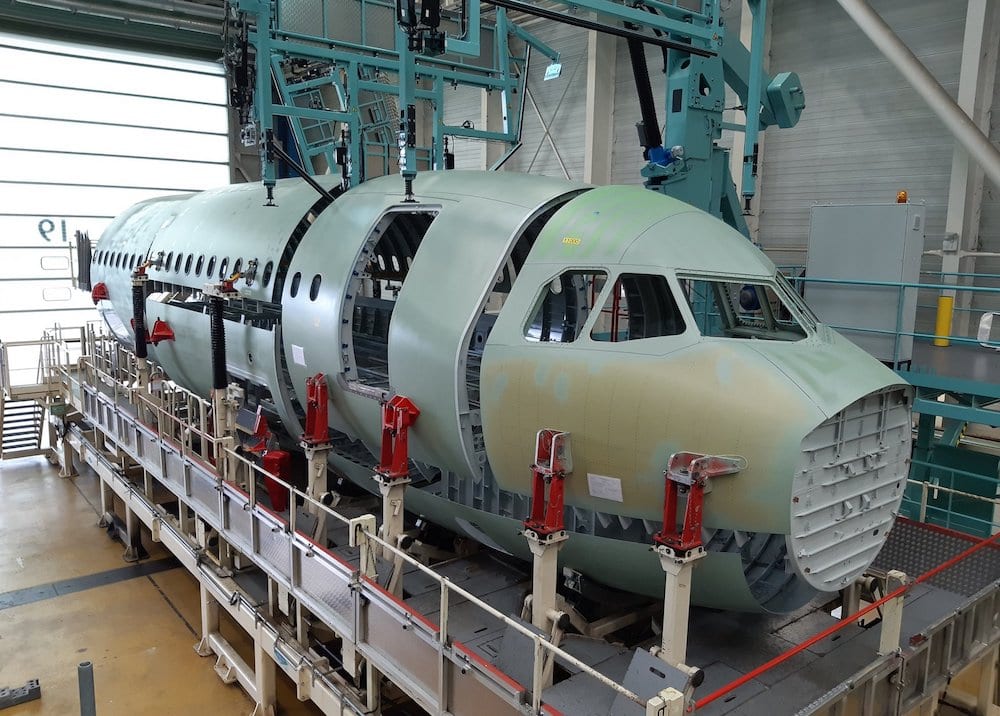
Airbus has begun assembly of the front fuselage on its first A321XLR aircraft. (Airbus)
Airbus has started assembling the nose and front fuselage for its first A321XLR in France, according to a July 9 press release.
The latest milestone in the A321XLR program comes less than two months after the start of structural assembly of the rear and centre fuselages in Germany. Now, Airbus teams are taking another significant production step with the structural assembly and system equipment of the nose and front fuselages at its Saint-Nazaire facility.
“This is a key milestone for the A321XLR. We are on track to support the aircraft’s entry into service by 2023,” Martin Schnoor, head of the A321XLR at Airbus said in a statement.
H2FLY and Deutsche Aircraft Partner to Research Hydrogen Fuel Cells
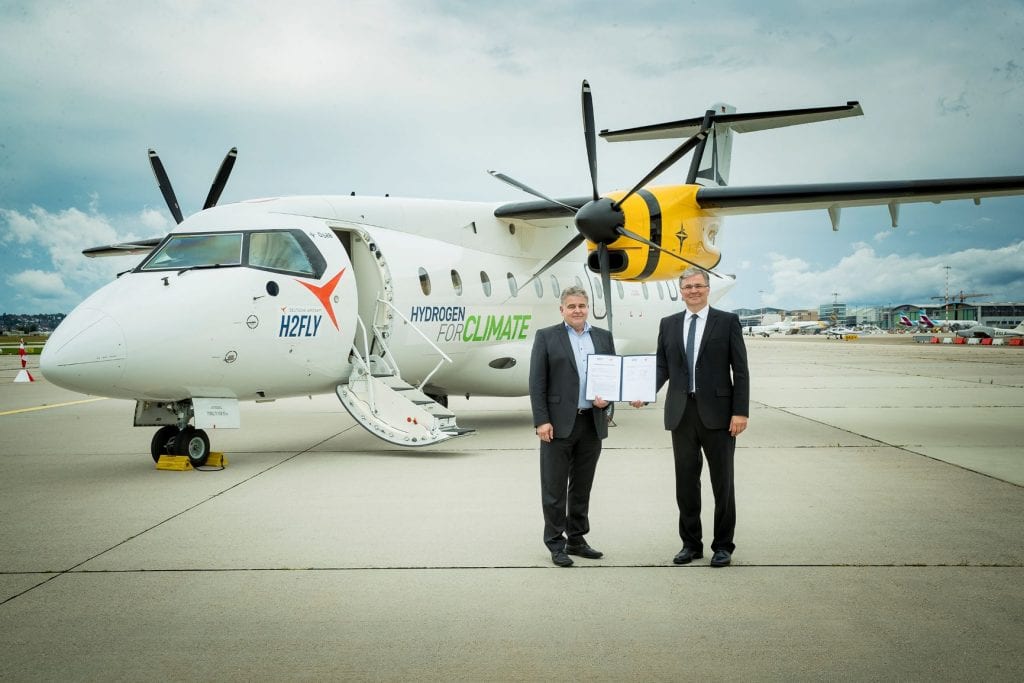
The companies plan to convert a Dornier 328 aircraft for a hydrogen power system with the goal of flying the aircraft in 2025.
The German aircraft manufacturer, Deutsche Aircraft, and hydrogen fuel cell system company, H2FLY, have signed a memorandum of understanding (MoU) for a research and development program centered on hydrogen fuel cell technology for commercial regional aircraft, according to a July 6 press release.
“Hydrogen fuel cell technology provides an opportunity for us to completely eliminate carbon and NOx emissions from regional flights and the technology to make that happen is closer than most people think, Prof. Dr. Josef Kallo, co-founder and CEO of H2FLY, said in a statement. “Over the last 16 years we have worked hard to demonstrate our technology on smaller aircraft, completing record breaking flights based six powertrain generations. Today we’re pleased to be taking that to the next level with Deutsche Aircraft as we scale our efforts up to regional aircraft.”
The companies plan to convert a Dornier 328 aircraft for a hydrogen power system with the goal of flying the aircraft in 2025, according to the release. The program is focusing on aircraft with up to 40 seats.
“Deutsche Aircraft is convinced that the higher propulsive efficiency of propeller powered aircraft will drive the change in propulsion technology and will result in reducing fuel consumption and emissions even further in the future,” Martin Nüßeler, CTO at Deutsche Aircraft, said in a statement. “Combining modern propeller aircraft design with zero carbon energy sources is central to achieving climate-neutral air transportation.”
Qatar Airways Joins IATA’s Turbulence Aware Platform
Qatar Airways and the International Air Transport Association (IATA) announced that Qatar Airways will become the first airline in the Middle East to join the IATA Turbulence Aware platform, according to a July 8 press release.
IATA describes Turbulence Aware as a platform that helps airlines “mitigate the impact of turbulence, by pooling and sharing anonymized turbulence data from multiple participating airlines and thousands of daily flights.”
Qatar Airways was the first Middle Eastern carrier to participate in the Turbulence Aware initiative when it was launched as a pilot project in December 2018. The airline has equipped 120 aircraft with the Turbulence Aware platform, with plans to expand it to the rest of its fleet.
Safran Tests SAF on Helicopter Engine
Safran Helicopter Engines completed the first step of its strategy to deploy sustainable aviation fuel (SAF) in engine test cells at its helicopter engine plants with a test on its Arrano engine during which it ran on 38 percent SAF, according to a July 5 press release.
The test was completed at its Bordes plant in France and the SAF was produced from used cooking oils, according to the release.
“Reducing CO2 emissions is a collective responsibility that has been embraced by the women and men of Safran,” Franck Saudo, Safran Helicopter Engines CEO, said in a statement. “By introducing SAF, and specifically biofuel, to helicopter operators and at our plants, we are reducing CO2 emissions at both. I am proud that once again, Safran has taken the lead in aviation decarbonization.”
Air Taxi
CAE and Volocopter Form Partnership for Pilot Training

Experts in the industry are warning that air taxi manufacturers need to start creating pilot training programs now in order to meet planned commercial launches in the next three or four years. (CAE)
Volocopter and CAE announced a new partnership to develop a training program for Volocopter’s electric vertical takeoff and landing (eVTOL) pilots, according to a July 8 press release.
The partnership will include a $40 million investment from CAE to meet Volocopter’s global pilot demands, according to the release.
“As we scale our UAM services in cities around the world, specific pilot training and qualification for our Volocopters will be an important element. We are proud to be partnering with CAE, who have a track record in developing best-in-class, innovative pilot training solutions for new aircraft programs. It will greatly benefit Volocopter’s entry-into-service timeline and scale,” Florian Reuter, CEO of Volocopter, said in a statement. “We are excited about CAE’s endorsement and look forward to collaborate as partners focused on combining future-oriented technologies to ensure aviation safety.”
CAE says that air taxi companies need to start developing pilot training programs now to meet 2024 launch date timelines, representatives for the company said during a July 7 call with reporters.
“As a high-technology company and the industry leader in pilot training, we continuously look at providing solutions that make the world a safer place,” Nick Leontidis, CAE group president of civil aviation training solutions, said in a statement. “We are committed to supporting Volocopter’s inspiring vision and we look forward to leading in the design of UAM pilot training that prioritizes safety of operations through our data-driven solutions, world-class pilot training experience, and longstanding relationships with civil aviation authorities across the globe.”
Volocopter Receives Prerequisite Approval from EASA to Begin eVTOL Aircraft Production
Volocopter, the German air taxi and drone manufacturer, received a Production Organization Approval (POA) from the European Union Aviation Safety Agency (EASA), the prerequisite to beginning production of its electric vertical takeoff and landing (eVTOL) aircraft, the company announced in a July 6 press release. Volocopter will also be acquiring longtime partner, DG Flugzeugbau, a composite aircraft producer.
“Our ten-year partnership with DG Flugzeugbau has been an extraordinary learning experience,” Florian Reuter, CEO of Volocopter, said in a statement. “Having this legendary industry leader on our side to kick-start scalable and affordable UAM for people and cargo has been a game changer. Today marks an exciting milestone as we unify DG Flugzeugbau’s leadership in aviation production with Volocopter’s pioneering UAM goals to establish yet another crucial stepping-stone for our collective global endeavors.”
Unmanned
Volansi Names Roper CEO
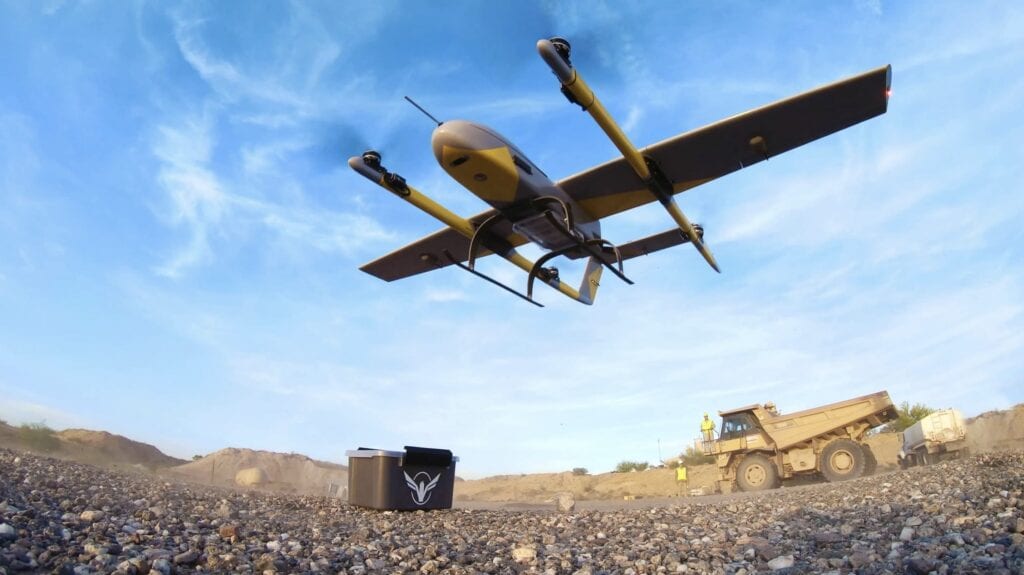
Volansi’s VOLY C10 UAV. (Volansi)
Volansi, a cargo drone delivery company, has named Dr. Will Roper, former Assistant Secretary of the U.S. Air Force for acquisition, technology and logistics, as its new CEO, according to a July 8 press release.
Roper was previously named to Volansi’s board of directors in March 21. During his time working with the Air Force, Roper spearheaded multiple efforts to advance innovation including initiatives like AFWERX and small business innovative research (SBIR) reform. He was also a strong advocate for Agility Prime, which is advancing commercial air taxi companies.
“As a Volansi board member, I’ve been impressed by the company’s capacity for innovation,” Roper said in a statement. “The company’s VTOL designs are well-suited for a range of commercial and military applications. It felt like a natural fit for me to bring my industry knowledge as well as operations and logistics experience to help create disruptive solutions for the transportation of medium to heavy weight payloads. It’s an exciting opportunity.”
Military
Netherlands Gets First MQ-9A Block 5
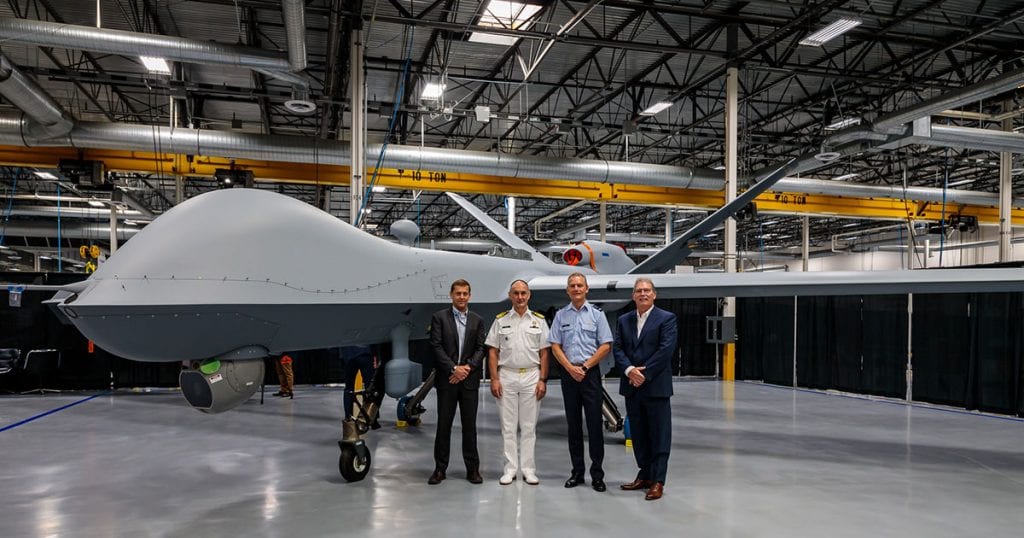
This is the first of four aircraft and ground stations the RNLAF will receive, according to the release. The MQ-9A will be delivered to the Netherlands by the end of 2021.
General Atomics Aeronautical Systems, Inc. (GA-ASI) has completed the Royal Netherlands Air Force’s (RNLAF) first MQ-9A Block 5 remotely piloted aircraft (RPA) and ground control station (GCS), according to a July 8 press release.
“We are proud to begin this new relationship with the Royal Netherlands Air Force,” Linden Blue, GA-ASI CEO, said in a statement. “With millions of hours of proven performance under its wings, the MQ-9 is ideally suited to support their nation’s ISR needs. The Netherlands now joins the United Kingdom, Italy, France and Spain as NATO countries operating our advanced RPAs, with Belgium coming online in the next few years.”
This is the first of four aircraft and ground stations the RNLAF will receive, according to the release. The MQ-9A will be delivered to the Netherlands by the end of 2021.
Testing for the aircraft will begin later this year at GA-ASI’s Gray Butte Flight Operations Facility in California, according to the release.
Boeing Rolls Out Norway’s First P-8A Poseidon
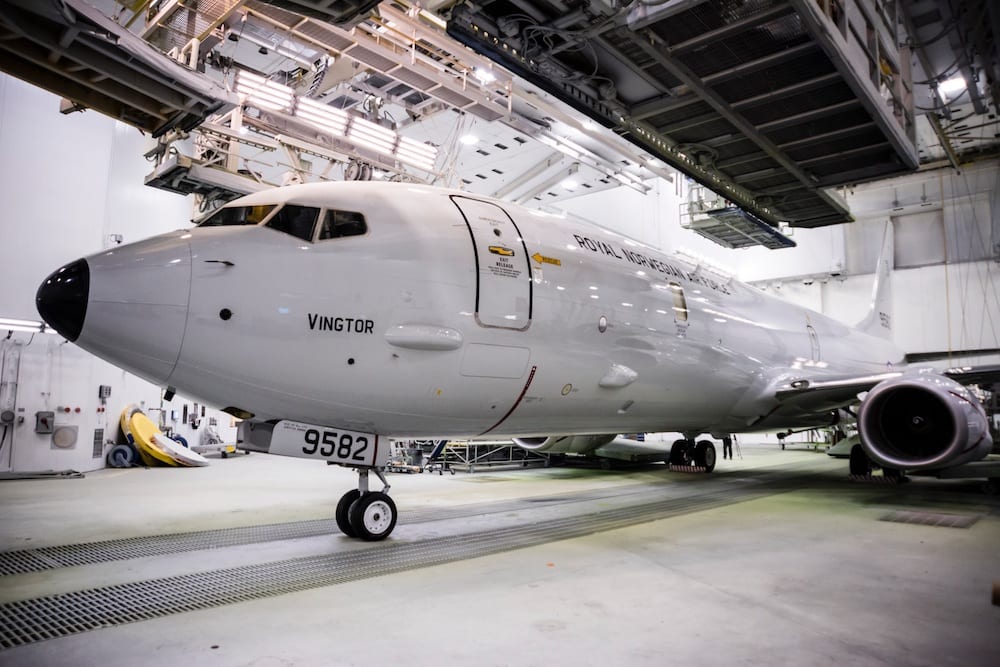
The first Norwegian P8A Poseidon rolled out of the paint shop in Renton. (Boeing)
The first P-8A Poseidon aircraft for Norway rolled out of the paint shop in Renton, in Royal Norwegian Air Force livery, according to a July 9 press release. Norway is one of eight nations to have acquired the P-8A as their new multi-mission maritime patrol aircraft.
Norway’s first P-8A aircraft – Vingtor – will now return to the factory floor to be prepared for flight testing. First flight is scheduled for later this month, and mission systems will be installed on the aircraft after that.
More Than 80 Companies Competing in U.S. Air Force JADC2 Effort
The U.S. Air Force has instituted a broad competition on maturing Joint All Domain Command and Control (JADC2), as the service has brought in 81 companies to compete for JADC2 contracts since May last year.
On July 8, the Air Force announced its third JADC2 tranche of 29 companies competing for up to $950 million in indefinite-delivery, indefinite-quantity contracts for JADC2, an effort to use artificial intelligence (AI) and advanced computing to build a cross-service digital architecture for multi-domain operations that are to rely on the fast provision of information from sensors to shooters.
The companies announced July 8 are Black Sage Technologies Inc., Clarity Innovations LLC, Deloitte Consulting LLP, Frontier Technology Inc., Global Infotek Inc., Greystones Consulting Group LLC, Government Research Specialists, Hughes Network Systems LLC, Hypergiant Galactic Systems Inc., Kymeta Corp., Mission Solutions LLC, Net Vision Consultants Inc., NXM Labs Inc., Oracle America, Inc. [ORCL], PARASANTI Inc., PLEXSYS Interface Products Inc., Polysentry Inc., Rackner Inc., Research Innovations Inc., Rolls-Royce North American Technologies Inc., SAAB Sensis Corp.; Scientific Systems Co. Inc., SLICEUP Inc., Software AG Government Solutions Inc., Spectral Sensor Solutions LLC, Systems & Technology Research LLC, UMBRA LAB Inc., XL Scientific LLC, and Yakabod Federal Solutions Inc.
Space
Virgin Galactic Completes First Fully-Crewed Spaceflight

This image of Virgin Group founder Richard Branson was posted to his Twitter account as Virgin Galactic completed its first fully-crewed spaceflight on Sunday. (Virgin Galactic)
On Sunday July 11, Virgin Galactic completed their first fully-crewed spaceflight, with Richard Branson, founder of the Virgin Group, onboard.
According to a message posted to Twitter by Virgin Galactic following the flight, their spacecraft, the VSS Unity, reached top speed of Mach 3 and a “space altitude of 53.5 miles.”
Check out the full replay of the flight here.
FAA Can Now Track Space Launch and Reentry in ATC System Command Center
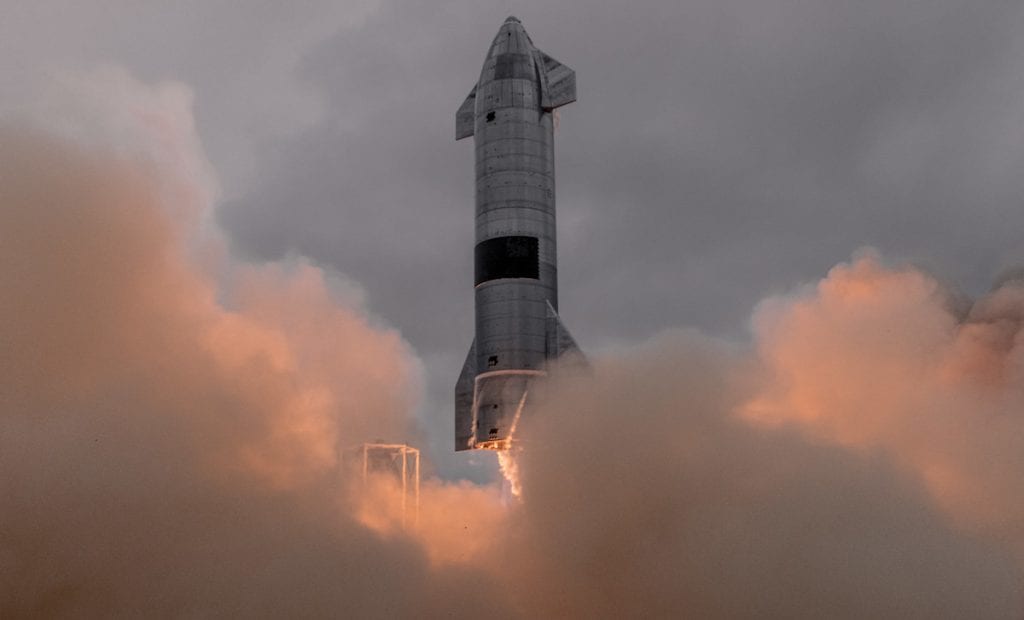
SpaceX completed a successful takeoff and landing of its Starship Rocket on May 5. (SpaceX)
The Federal Aviation Administration’s (FAA) National Airspace System has a new capability, the Space Data Integrator (SDI), allowing it to track space launch and reentry vehicles in near real time, according to a July 8 press release from the agency.
The SDI will allow the FAA to track space launches and reentries by automatically sending data to the FAA’s Air Traffic Control System Command Center, according to the release.
“This is a critical tool as the number of users of our already busy airspace increases,” FAA Administrator Steve Dickson said in a statement. “With this capability, we will be able to safely reopen the airspace more quickly and reduce the number of aircraft and other airspace users affected by a launch or reentry.”
The data provided from SDI includes vehicle position, altitude, speed, and deviations from its expected flight path, according to the release.
NASA Finalizes Contract with Northrop Grumman for Moon Outpost Living Quarters

A rendering of the Habitation and Logistics Outpost (HALO), one of the elements of Gateway. (NASA)
NASA has finalized its contract with Northrop Grumman to develop the living quarters for astronauts working on the Gateway, the planned in-orbit moon outpost. NASA announced July 9 the firm, fixed-price contract is valued at $935 million.
This is a step forward for NASA’s Artemis program, which is developing the Gateway to support science investigations and surface landings at the moon. Northrop Grumman will develop what is called HALO — the Habitation and Logistics Outpost. The combined spacecraft is targeted for launch in November 2024 on a SpaceX Falcon Heavy rocket.
The post What’s Trending in Aerospace – July 11, 2021 appeared first on Aviation Today.
Check FastApn access for commercial satcoms at Fastapn
Flytlink – Avionics, Satcom’s and IFE Consultants
